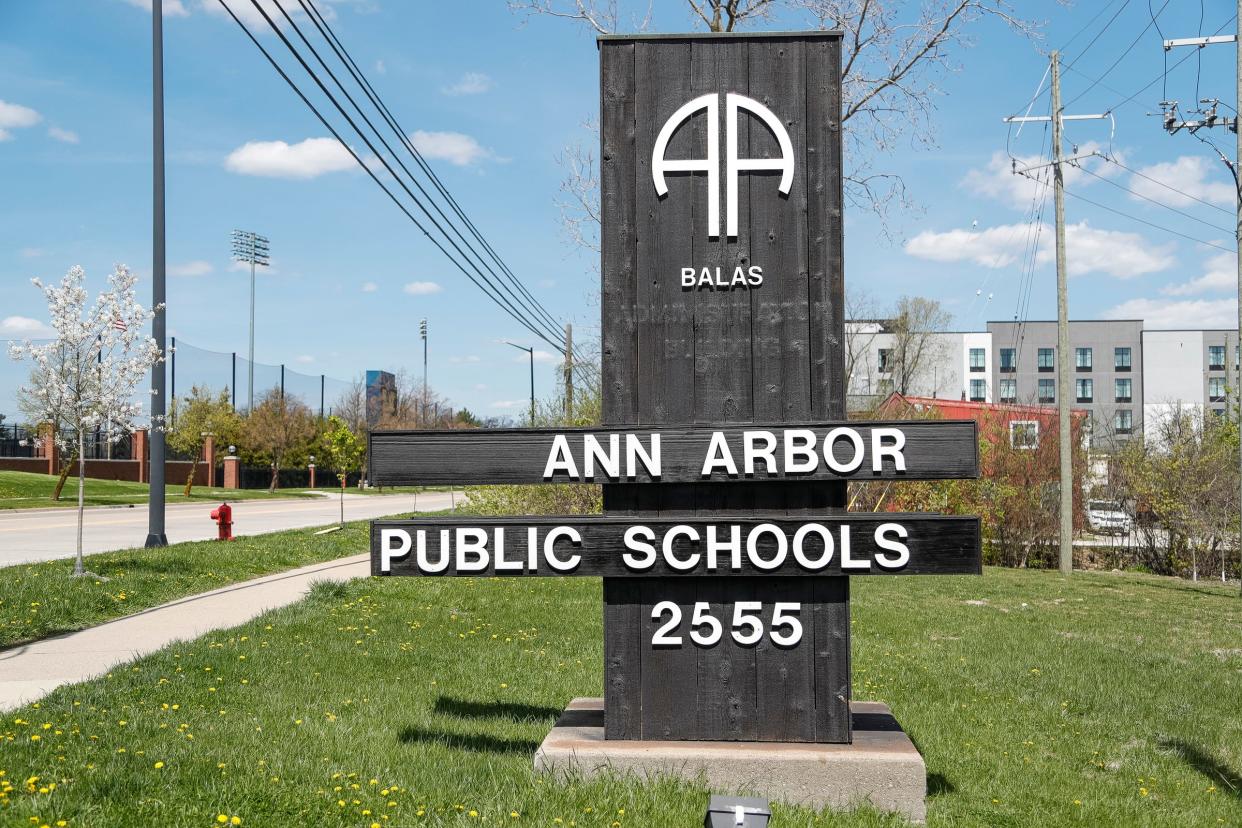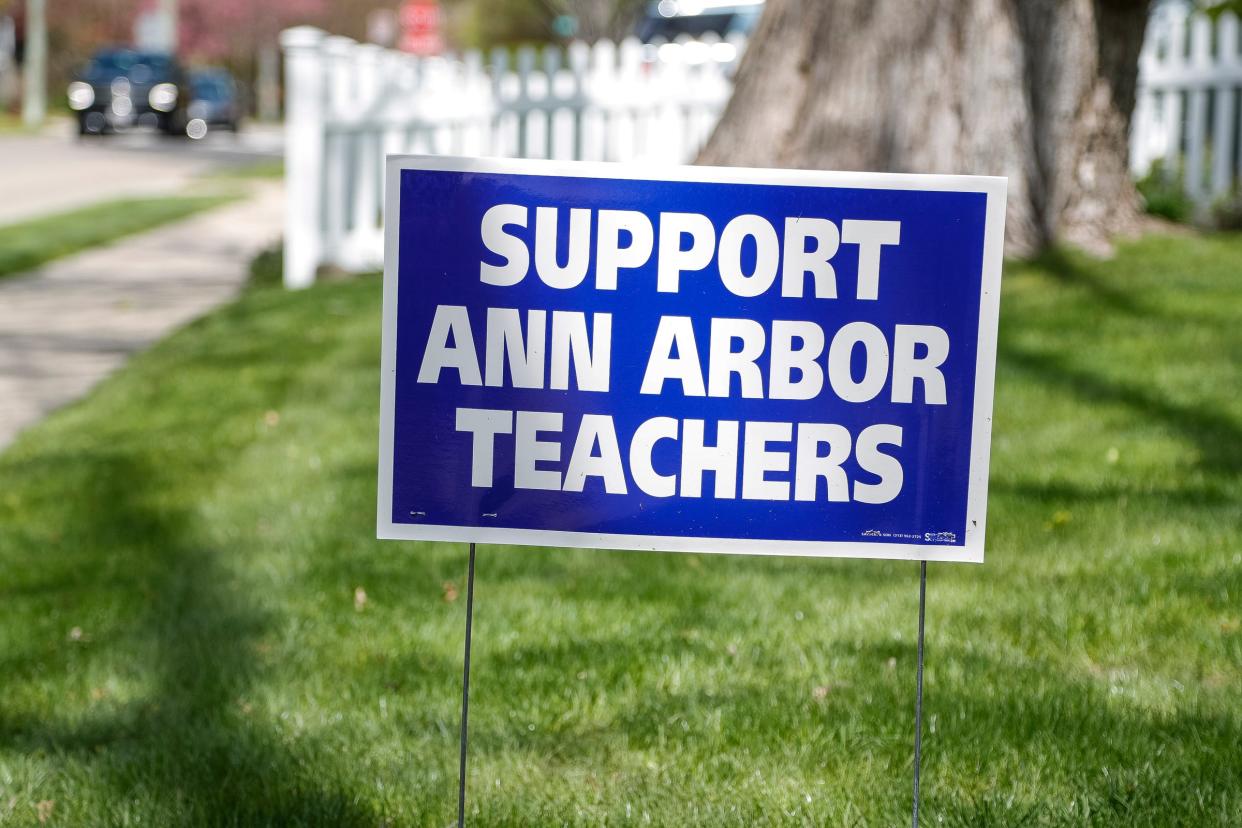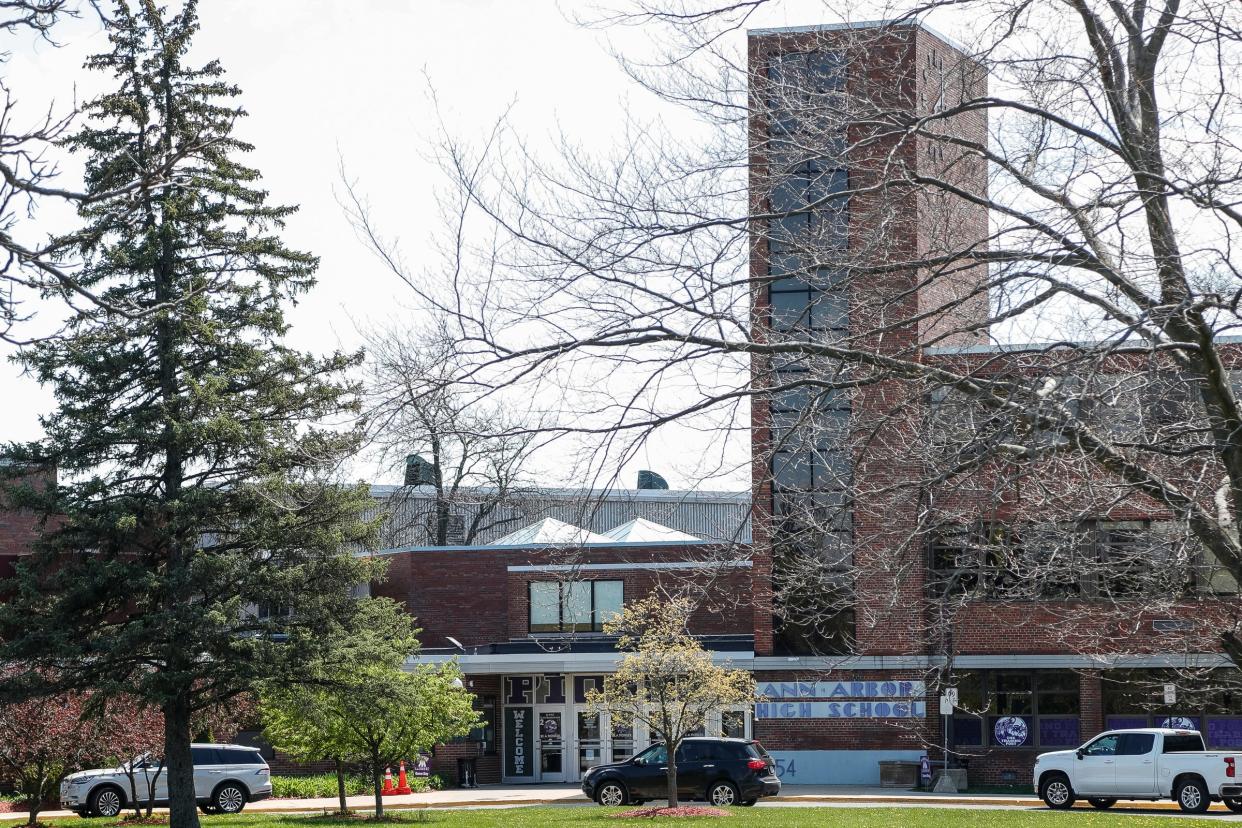Ann Arbor schools refused to save money for years. Now jobs will be lost. | Opinion
In front of hundreds of protesting Ann Arbor Public Schools teachers, staff and parents, the Ann Arbor Board of Education voted on April 11 to issue layoff notices to an as-yet undetermined number of employees.
As hard as the decision was for the seven members of the board — two of them former teachers, and four with children in the district — the reality is that they had no choice. A plan for resolving the district’s $25 million budget shortfall was due to the Michigan Department of Treasury on Monday.
How did a prestigious district like Ann Arbor get here, seemingly overnight? According to the district, it's a combination of financing 480 additional staff positions, even as prolonged pandemic school closures lost Ann Arbor schools 1,123 students, and with them, more than $10 million in state funding tied to enrollment. This, in turn, was compounded by a $14 million budget error that wasn’t discovered until after the board — believing the district was in good financial shape — last year approved a long overdue 2% salary increase for teachers.
What the superintendent and board have not mentioned is Ann Arbor schools’ decade-long financial gamble.

Even facing this shortfall, the district would likely have been in better shape had it followed the trend of other Michigan school districts: Build up the district’s fund balance. That’s the safety net in the bank, a rainy day fund the state requires school districts to maintain.
AAPS certainly could have put more money in the bank before the pandemic. Or during it, as the district received nearly $22 million in federal pandemic relief money and a historic per pupil funding increase from the state.
District leaders chose not to.
For a decade, Ann Arbor schools former superintendent and board chose to spend, not save. They defended keeping the fund balance low, saying that spending on new programs would boost enrollment, and even that it was the morally correct way to go.
Why?
Ann Arbor gambled that enrollment would never decline
Ann Arbor wasn’t struggling before 2020. It was, and still is, in one of Michigan’s wealthiest communities. For the last decade, enrollment was rapidly increasing, until Ann Arbor's school-closure pandemic policies — extended long after neighboring districts were back in the classroom — drove families away.
The general fund balance is the money a district is supposed to keep in reserve in case something disastrous happens — like a $14 million budget mistake, or a lawsuit, both of which happened to AAPS in the past year. Having money in reserves allows the distric to keep paying salaries and benefits while figuring out a longer-term solution to a budget shortfall.
The Michigan School Business Officials organization recommends that school districts maintain a fund balance equal to 15% of annual expenditures. If a district’s fund balance drops below 5% for more than two consecutive years, it can be taken over by a state-appointed emergency manager.
Between the 2008 recession and 2014, Michigan schools were struggling, and on average had fund balances under 10%, according state data portal MiSchoolsData.org.
As school revenues rebounded between 2014 and 2019, the average fund balance for Michigan school districts increased to more than 15%. With federal pandemic emergency funding, many districts took the opportunity to further increase their savings. As of the last school year, Michigan school districts were holding an average 21.2% of regular general fund expenses in reserve, according to MiSchoolsData.
According to the amended AAPS budget from February of this year, total expenditures will be over $321.4 million, up from the $312 million projected in the original budget. The projected fund balance at the end of this year will be roughly $6.3 million, about 2% of revenues, below the state's 5% threshold.
If Ann Arbor had saved the recommended 15%, the district's fund balance would be $48.2 million.
Other districts are keeping this much revenue in reserve because officials know their financial positions are dependent on federal, state and county tax money, which can be unpredictable. Another big national recession could sharply cut state school funding. Districts are also at risk if a local school tax isn't renewed, in part because districts repay money borrowed for specific purposes through tax levies. That could happen in Ann Arbor this year if the county’s special education bond isn’t renewed by voters.
And, of course, districts want to avoid state intervention.

Committed to bad financial strategy
For years, Ann Arbor Public Schools’ auditors pointed out the district’s low fund balance as something to watch, even while giving the district a clean audit, noting that a more substantial savings account would improve financial sustainability.
But the district’s last superintendent insisted that keeping the fund balance low was sound strategy.
In only one year of former AAPS Superintendent Jeanice Swift’s decade-long tenure was the district’s fund balance above 10%. For several years, it was barely above the board’s self-imposed requirement of 6%. Although some board members did raise questions, since 2014, the AAPS board of trustees agreed with Swift’s strategy as the right one for their wealthy community.
Not saving money, Swift argued, allowed the district to invest more into the schools, adding new programs like International Baccalaureate, a virtual high school and a fully virtual elementary launched in the 2021-2022 school year, using pandemic relief funds to pay for virtual teachers, a virtual principal, a virtual librarian and even a virtual gym teacher. The district anticipated an ongoing demand for virtual education, but the elementary school closed after one school year.
Board members endorsed Swift's strategy.
“Our fund balance is not as high as other districts, but we have chosen to commit to our community and to our community’s values to address our students’ needs, and sometimes that requires us to dip into the fund balance,” said then-school board president Rebecca Lazarus at the board’s Nov. 16, 2022 budget meeting, when the fund balance was 6.66%.
It was a risky strategy, Susan Baskett, the district’s longest serving trustee, acknowledged at a panel at the Ann Arbor Democrats’ monthly meeting, held on April 13.
But Baskett said she had no regrets. Spending money, not saving it, was the will of the community.
The strategy had, after all, worked for AAPS — as long as enrollment kept rising, year after year, and nothing happened to the economy.

Ann Arbor's COVID crash
When the pandemic hit, the schools closed and students left. And the federal relief dollars used to fill the salaries and benefits for certain positions like "virtual school principal" have dried up.
Now, when the district really could use money in the bank to get through the $25 million budget shortfall, it is left with few choices: borrowing from banks using next year’s revenue as collateral, brutal cuts to beloved programs and laying off teachers — all of which likely will lead to further declines in enrollment.
Other districts may be tempted to follow this strategy, as pandemic relief dollars expire and Michigan's population declines, keeping the rainy day fund low by design, reinvesting those dollars in new programs to attract families and grow district enrollment.
Ann Arbor offers a cautionary tale. Spending instead of saving may work, as long as enrollment keeps going up. But when it comes crashing down, it’s a hard fall.

Lena Kauffman is a freelance writer and the parent of three children attending Ann Arbor Public Schools. She’s been a close follower of the Ann Arbor Board of Education since 2020, when the schools closed and Ann Arbor students were forced to learn online only. In 2022, she ran unsuccessfully for school board to advocate for the well-being of children and families in the district, and to ensure more transparency in school board decision making. Her commentary and coverage of the Ann Arbor school board can be found on X under @LenaKauffman. Submit a letter to the editor at freep.com/letters, and we may publish it in print and online.
This article originally appeared on Detroit Free Press: Ann Arbor schools refused to save money. Now layoffs are coming.
